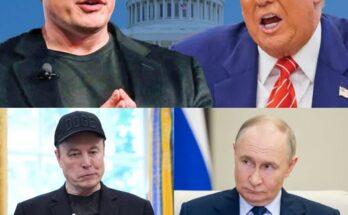
In recent months, trade tensions between major economic powers have reached new heights, sparking concerns over global supply chains, economic stability, and diplomatic relations. The latest round of tariffs, countermeasures, and political rhetoric has intensified, leading to uncertainty in markets and increased scrutiny from economists and business leaders alike.
This article provides an in-depth analysis of the ongoing trade disputes, key players involved, economic impacts, and potential resolutions.
The Key Players in the Trade Dispute
Trade tensions have primarily revolved around the United States, China, and the European Union, with other nations also feeling the ripple effects.
- United States: Under the current administration, the U.S. has pursued an aggressive trade policy aimed at reducing trade deficits and bringing manufacturing jobs back to American soil. Tariffs on foreign goods, particularly from China, have been a cornerstone of this policy.
- China: The world’s second-largest economy has responded with its own tariffs and trade restrictions, aiming to counterbalance the U.S.’s economic measures.
- European Union: The EU has been caught in the crossfire, attempting to navigate between U.S. policies and its own economic interests. European leaders have pushed for diplomatic solutions while considering retaliatory tariffs.
- Other Affected Nations: Countries like Canada, Mexico, Japan, and India have also been drawn into trade disputes, adjusting their own policies in response to changing trade dynamics.
Background and Timeline of Recent Escalations
Trade tensions have been brewing for years, but recent developments have exacerbated the situation:
- Initial Tariffs and Retaliation (2018-2019)
- The U.S. imposed tariffs on steel and aluminum imports, citing national security concerns.
- China retaliated with its own tariffs on American goods, particularly in the agricultural sector.
- The EU imposed countermeasures, affecting industries such as automotive and technology.
- Phase One Trade Agreement (2020)
- In an attempt to ease tensions, the U.S. and China signed the Phase One trade deal, which required China to purchase more American goods.
- Despite initial optimism, implementation issues arose, with accusations of non-compliance from both sides.
- Post-Pandemic Disruptions (2021-2023)
- The COVID-19 pandemic disrupted global supply chains, exacerbating trade difficulties.
- Countries reassessed trade policies, focusing on self-sufficiency and reducing dependency on foreign suppliers.
- Renewed Trade Conflicts (2024-Present)
- The U.S. and EU imposed new tariffs on Chinese electric vehicles and technology products, citing concerns over unfair subsidies.
- China retaliated with restrictions on rare earth exports, crucial for tech manufacturing worldwide.
- The World Trade Organization (WTO) became a battleground for trade disputes, with multiple cases filed against major economies.
Economic Impacts of Escalating Trade Wars
The ongoing trade tensions have had widespread economic consequences:
Impact on Global Markets
Markets have reacted with volatility, as businesses face uncertainty over costs and supply chain disruptions. Stock indices have shown fluctuations in response to trade announcements, reflecting investor concerns.
Effects on Consumers
Tariffs and trade restrictions have led to increased prices for consumer goods. Essential products such as electronics, automobiles, and household appliances have seen price hikes due to higher import costs.
Business Challenges
- Manufacturing Sector: Industries reliant on international supply chains, such as automotive and electronics, have faced production slowdowns.
- Agricultural Sector: Farmers, particularly in the U.S., have suffered from retaliatory tariffs on exports, leading to reduced demand for their products.
- Technology Companies: Semiconductor manufacturers and tech firms have struggled with restricted access to critical components, affecting innovation and production.
Shifts in Global Trade Alliances
Trade tensions have prompted countries to seek alternative partnerships:
- The EU has strengthened trade ties with Asian and Latin American markets.
- China has focused on expanding the Belt and Road Initiative to reduce reliance on Western economies.
- The U.S. has explored new trade agreements with allies such as India and Brazil.
Potential Resolutions and the Road Ahead
Despite the challenges, there are potential pathways to de-escalating trade tensions:
Diplomatic Negotiations
- Renewed discussions between global leaders could lead to compromises, reducing tariff barriers and fostering trade cooperation.
- The WTO could play a more active role in mediating disputes and enforcing fair trade practices.
Bilateral and Multilateral Agreements
- The expansion of trade agreements between like-minded nations could create stable trade environments, reducing reliance on unpredictable economic rivals.
- The Comprehensive and Progressive Agreement for Trans-Pacific Partnership (CPTPP) and other regional trade pacts offer alternative trade routes.
Technological and Industrial Adaptations
- Companies may invest in domestic manufacturing to reduce dependency on volatile trade relationships.
- Diversification of supply chains, with increased sourcing from multiple regions, could mitigate risks.
Conclusion
The current state of trade tensions reflects a shifting global economic landscape, where protectionist policies and strategic alliances play critical roles. While uncertainties persist, ongoing negotiations and adaptive business strategies will shape the future of international trade. Policymakers, businesses, and consumers alike must navigate this evolving environment carefully to ensure long-term economic stability.


